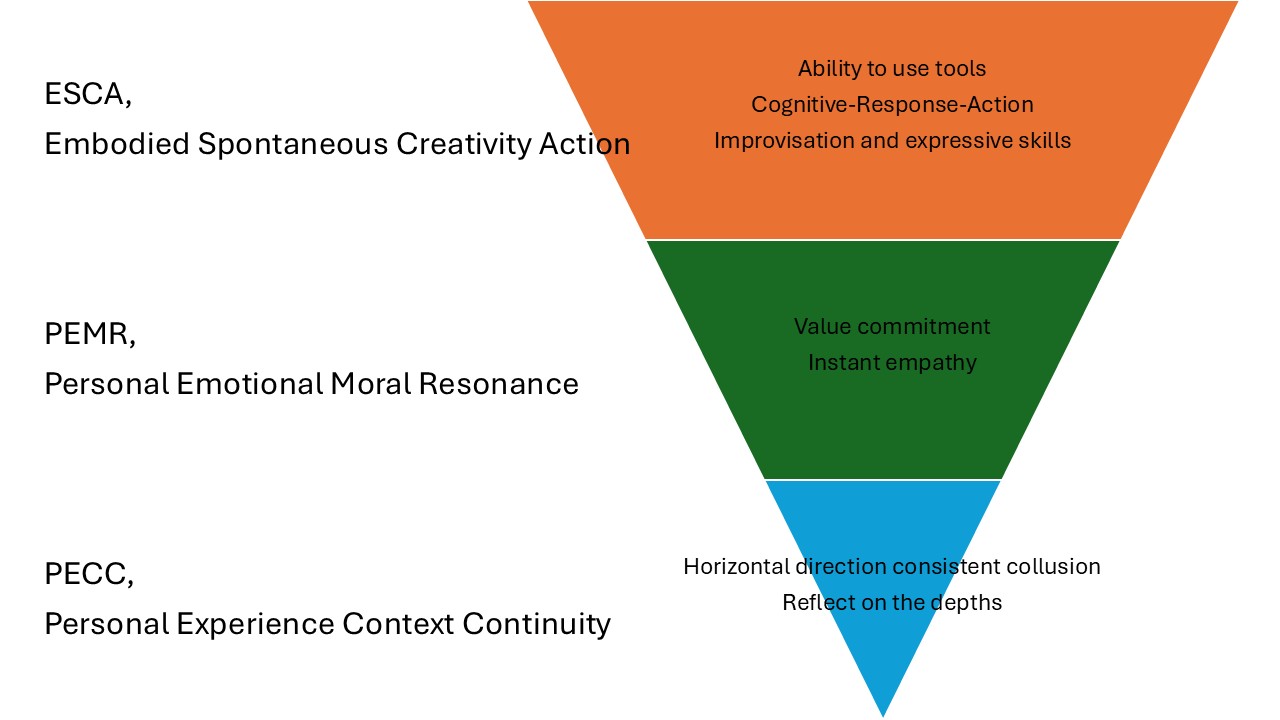這陣子又開始出現很多對於 AI 對教育帶來正負面影響的討論,我認為或許在下一個階段企業的面試實境中,會出現所謂的「逆圖靈測試 ( Reverse-Turning Test )」,也就是我們要開始辨別「在 AI 協助下表現更佳的人才」,我總結可能會有以下的測試:
一、個人經驗脈絡連續測驗 ( Personal Experience Context Continuity )
這包括了橫向的敘事情緒、真實的個人反思,以及縱向的聯想省思能力,能夠連貫過去經驗的事件細節與當下問題或議題串聯;
其中,人之所以能成為一個獨立且豐富的個體,失敗的省思與成功的經驗都是不可或缺的經歷,能夠將實際省思與經歷作為跨界與跨問題的思考前提,將會是個人在 AI 協助下表現更佳的絕佳能力。
二、個人情感道德共振測驗 ( Personal Emotional Moral Resonance )
在面臨利益衝突時,願意做出自揭風險或讓利決策,這樣價值承擔的高道德思維,將比傳統意義上的忠誠來得更有意義;
而在面對管理或顧客時,對微表情、語調變化的同步回應,將充分反應一個人是否能即時共情的能力,這也能為工作環境更增加實際的人味。
三、身體實作即興創意測試 ( Embodied Spontaneous Creativity Action )
「使用工具的能力」、「認知-反應-動作」的實際回饋、「即興創造與表現能力」,這都是 AI 暫時無法做得比人更好的事項。
若能現場利用隨手物品組裝低成本器具、表達或說明一個抽象概念,甚至只是展現出獨到的美感及品味,都能讓人在工作中更為突出。
若未來遠距工作甚至是「代理人概念」更加落實,將可以透過
1. ESCA 快速辨識並驗證真人↓
2. PEMR 認識其價值抉擇與同步情感↓
3. PECC 滲入追溯私有經驗、檢驗聯絡性
的上述順序,快速的認識對方,並保有審核的空間。
最終企業或人資要擁有一個自己的「逆圖靈儀表板 ( R-TT Dashbaord )」,用來分辨並評估自己需要的人才,並且持續更新迭代,得到更多面向與長期行為的驗證。
以上,你認為這一整篇所敘述的測驗與場景,適合你的企業嗎?
又或者,這根本是一篇 AI 創作出來的假想文字呢?
Recently, there has been a surge of discussion about the positive and negative effects AI is having on education. I suspect that, at the next stage of hiring, companies will introduce a so-called “Reverse Turing Test” (R-TT)—a way to identify candidates who perform even better because they know how to partner with AI. I foresee three possible test modules:
1.Personal Experience Context Continuity (PECC)
This probes a candidate’s horizontal narrative flow, authentic self-reflection, and vertical associative thinking—linking detailed past events to present problems or topics. Being able to draw on both failures and successes as raw material for cross-domain reasoning will become a standout capability in an AI-augmented world.
2.Personal Emotional Moral Resonance (PEMR)
When interests collide, candidates who voluntarily disclose risks or share benefits show higher-order moral judgment—far more meaningful than traditional notions of “loyalty.” In management or customer settings, their ability to mirror micro-expressions and tone shifts demonstrates real-time empathy, adding genuine “human warmth” to the workplace.
3.Embodied Spontaneous Creativity Action (ESCA)
Skills such as tool use, rapid “perception-reaction-movement” feedback loops, and improvisational creativity remain areas where humans still outperform AI. Assembling low-cost props on the spot, explaining an abstract concept with everyday objects, or simply exhibiting distinctive aesthetic taste can all help a person shine at work.
If remote work and the “agent” concept keep advancing, an interviewer might:
1.Use ESCA to verify the candidate is a real human on the spot
2.Apply PEMR to understand their value trade-offs and emotional synchrony
3.Deploy PECC to trace private experience and test contextual linkage
—creating a fast yet reliable vetting flow while retaining room for judgment.
Ultimately, HR teams will need their own Reverse Turing Dashboard (R-TT Dashboard) to distinguish and assess the talent they require, continuously iterating it to capture more dimensions and long-term behavioral evidence.
What do you think—would these tests and scenarios suit your organization?
Or could this entire essay be nothing more than an AI-generated thought experiment?
